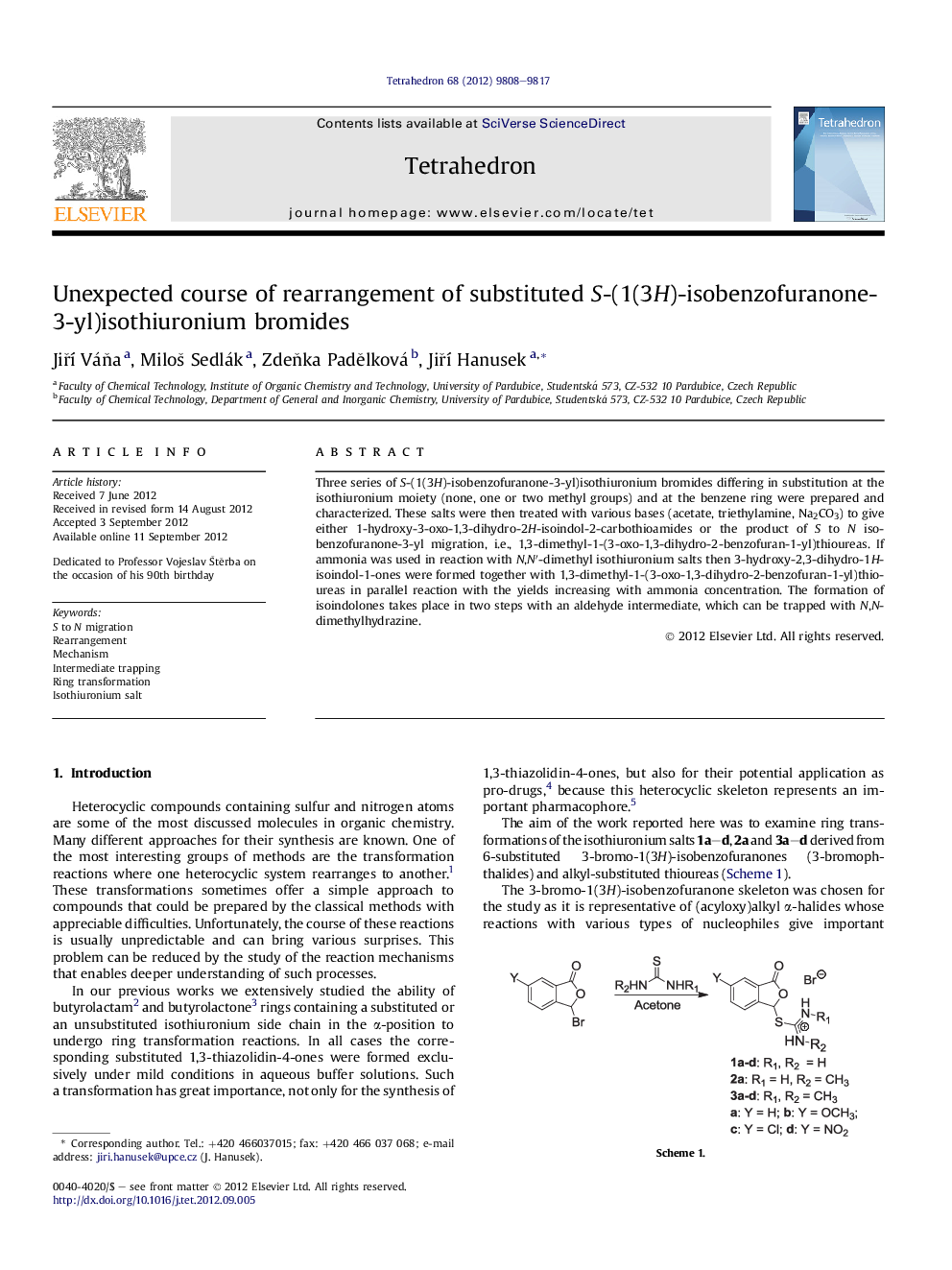| Article ID | Journal | Published Year | Pages | File Type |
|---|---|---|---|---|
| 5219752 | Tetrahedron | 2012 | 10 Pages |
Three series of S-(1(3H)-isobenzofuranone-3-yl)isothiuronium bromides differing in substitution at the isothiuronium moiety (none, one or two methyl groups) and at the benzene ring were prepared and characterized. These salts were then treated with various bases (acetate, triethylamine, Na2CO3) to give either 1-hydroxy-3-oxo-1,3-dihydro-2H-isoindol-2-carbothioamides or the product of S to N isobenzofuranone-3-yl migration, i.e., 1,3-dimethyl-1-(3-oxo-1,3-dihydro-2-benzofuran-1-yl)thioureas. If ammonia was used in reaction with N,N′-dimethyl isothiuronium salts then 3-hydroxy-2,3-dihydro-1H-isoindol-1-ones were formed together with 1,3-dimethyl-1-(3-oxo-1,3-dihydro-2-benzofuran-1-yl)thioureas in parallel reaction with the yields increasing with ammonia concentration. The formation of isoindolones takes place in two steps with an aldehyde intermediate, which can be trapped with N,N-dimethylhydrazine.
Graphical abstractFigure optionsDownload full-size imageDownload as PowerPoint slide
